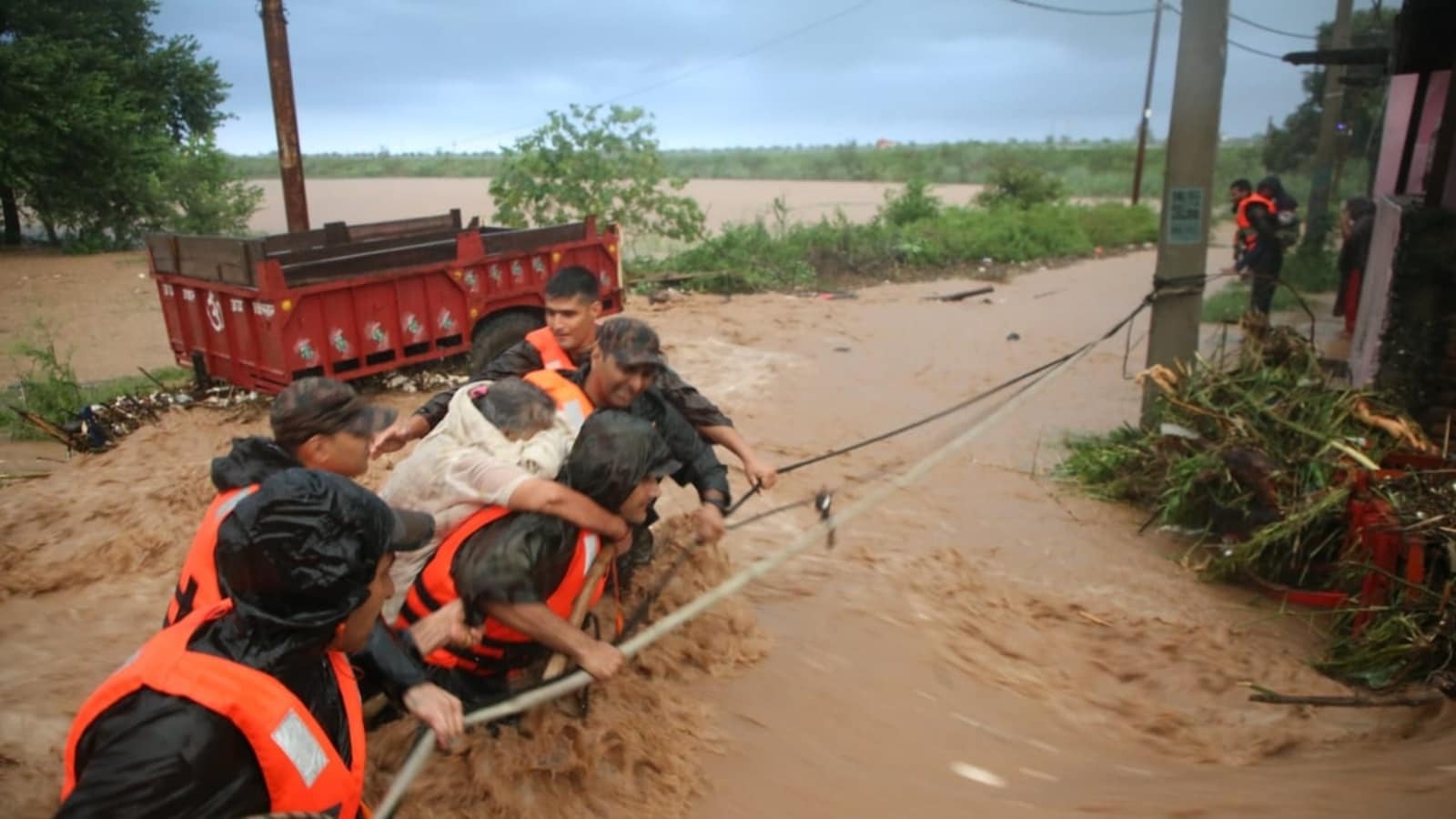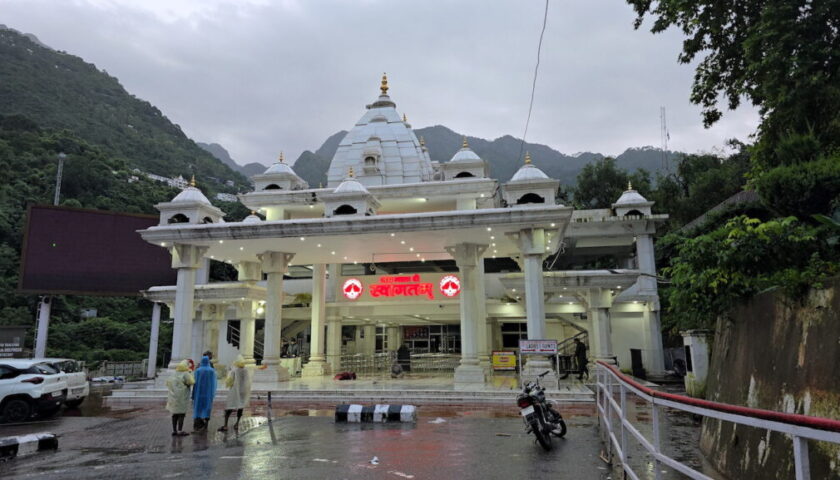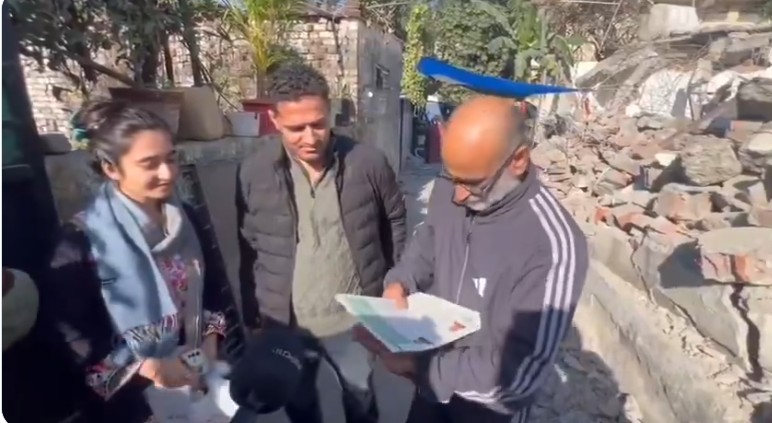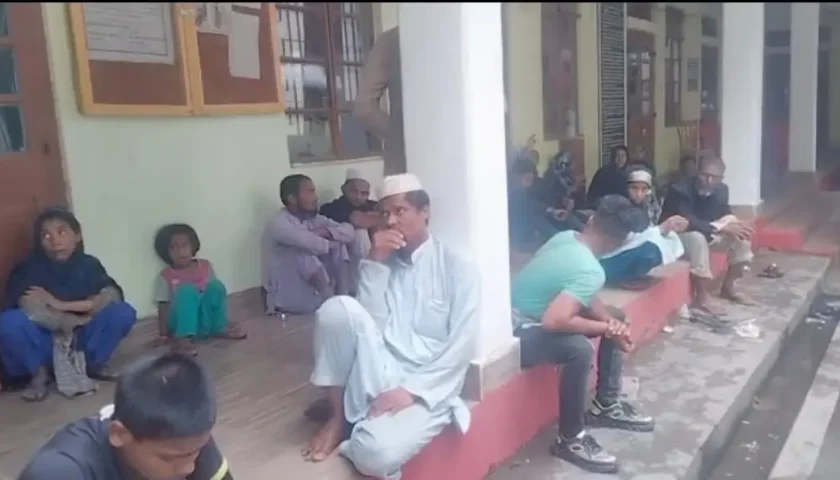Jammu Floods 2025: 5,000 Evacuated, Record Rainfall, Rescue & Relief Operations Continue
By: Javid Amin | 27 Aug 2025
Record-Breaking Rainfall Turns Jammu Into a Disaster Zone
The Jammu region has been battered by unprecedented rainfall, causing devastating flash floods across multiple districts. According to officials, Jammu recorded 380 mm of rainfall in just 24 hours, the highest single-day rainfall since records began in 1910.
This record-breaking deluge triggered floods that inundated low-lying areas, riverside settlements, and parts of urban Jammu, forcing thousands of people to abandon their homes. Experts warn that this kind of extreme rainfall is a climate change signal, with intensifying monsoon patterns hitting the fragile Himalayan region harder each year.
Mass Evacuations: 5,000 People Moved to Safety
More than 5,000 people have been evacuated from flood-hit areas in Jammu and Samba districts.
-
Jammu District: Over 3,500 people rescued in a nonstop 38-hour operation.
-
Samba District: Hundreds evacuated from inundated villages.
-
Affected Areas: Peerkho, Gujjar Nagar, R S Pura, Nikki Tawi, Beli Charan, Gurkhanagar, Qasim Nagar, Rajiv Nagar, Akhnoor, Pargwal, and areas along the swollen Tawi river.
The Army, NDRF, SDRF, and local police have been working tirelessly with boats and emergency equipment to rescue stranded civilians, particularly from riverbanks and low-lying localities.
⚠️ Warning: Authorities have advised the public to avoid non-essential movement and stay indoors until water levels fully recede.
Damage to Homes, Infrastructure & Historic Bridges
The floods have caused widespread destruction of infrastructure:
-
The historic Madhopur bridge on the Jammu–Pathankot highway has been severely damaged, forcing a complete halt of traffic.
-
Several roads and highways remain blocked, hampering relief efforts and supply chains.
-
Dozens of villages near rivers have reported damage to homes, livestock loss, and destruction of farmlands.
-
Electricity, water supply, and internet services remain severely disrupted in most flood-hit areas.
Authorities say the Chenab river is still flowing close to danger mark, while the Tawi river is slowly receding after breaching banks in multiple places.
Relief Camps & Emergency Services Activated
With thousands displaced, the administration has set up relief camps, community kitchens, and medical aid stations across Jammu.
Lieutenant Governor Manoj Sinha confirmed that adequate relief materials—including food, medicines, tents, and blankets—are being distributed.
Rescue operations are being coordinated by:
-
Army & Air Force – Airlifting relief materials to remote areas.
-
NDRF & SDRF – Conducting ground-level rescue missions.
-
Local police & volunteers – Assisting in evacuations and relief distribution.
A 24/7 flood control room has been activated to monitor river gauges, coordinate emergency calls, and release timely public advisories.
Communication & Power Restoration: A Race Against Time
One of the biggest challenges has been the collapse of communication networks and power supply across large parts of Jammu.
-
Internet and mobile services remain patchy or unavailable in flood-hit districts.
-
Power outages have hit hospitals, schools, and water treatment plants.
-
Restoration teams are working round-the-clock to repair transformers, replace electric poles, and reconnect mobile towers.
Deputy Commissioner Rakesh Minhas said restoration of roads, essential supplies, electricity, and mobile services is being ensured on a war footing.
Schools, Colleges Shut – Public Safety Priority
Given the scale of devastation and risk, the Jammu administration has ordered all schools and colleges to remain closed until further notice. The public has been strictly advised to avoid venturing out unnecessarily, especially near riverbanks and bridges.
Government & Leaders’ Response
-
LG Manoj Sinha: “We are ensuring adequate supply of relief materials and all possible assistance to those affected.”
-
Union Minister Jitendra Singh: Confirmed that Prime Minister Narendra Modi is closely monitoring the situation and assured that the Union government is extending all necessary support.
-
Divisional Commissioner Ramesh Kumar: Leading coordination between Army, NDRF, SDRF, paramilitary, and civil authorities.
Helpline numbers have been released for each district to assist families in locating relatives or requesting rescue support.
Bigger Picture: Climate Alarm for the Himalayas
Experts stress that this isn’t just an isolated event but part of a larger climate crisis in the Himalayan belt.
-
Rising global temperatures are intensifying rainfall events.
-
Urbanization and unregulated construction near rivers worsen flood impacts.
-
Weak drainage infrastructure leaves cities like Jammu and Srinagar highly vulnerable.
Without better flood management systems, early warning mechanisms, and ecological safeguards, such disasters will only become more frequent.
Conclusion: Resilience Amid Ruin
The people of Jammu are once again facing nature’s fury with courage. Rescue operations are ongoing, but the path to full recovery will be long. As relief camps fill with displaced families and broken infrastructure demands repair, this disaster serves as a reminder of both the fragility of Himalayan ecosystems and the resilience of its people.




